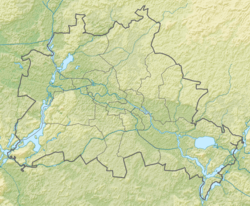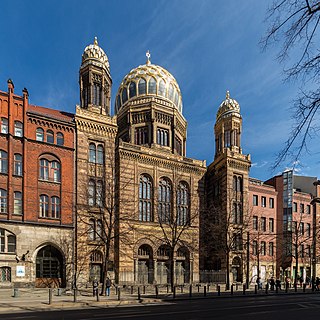
The New Synagogue on Oranienburger Straße in Berlin is a mid-19th century synagogue built as the main place of worship for the city's Jewish community, succeeding the Old Synagogue which the community outgrew. Because of its Moorish style and resemblance to the Alhambra, the New Synagogue is an important architectural monument in Germany.

Roonstrasse Synagogue is an Orthodox Jewish congregation and synagogue, located at 50 Roonstraße in Cologne, Germany. The synagogue is the only surviving of the five synagogues of Cologne before the Nazi era.

The Fasanenstrasse Synagogue was a former liberal Jewish congregation and synagogue, that was located at 79–80 Fasanenstrasse off Kurfürstendamm, in the affluent neighbourhood of Charlottenburg, in Berlin, Germany. Completed on 26 August 1912, the synagogue was located close to the Berlin Stadtbahn and Zoo Station.

Alexander (Alex) Beer was a German architect.
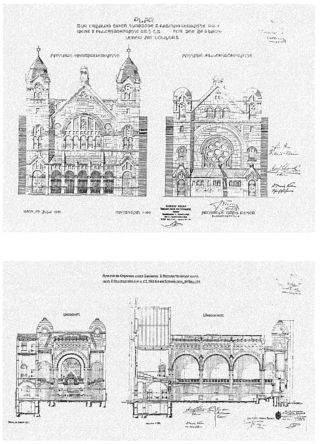
The Pazmanitentempel, also known as the Jubiläumstempel, was a Jewish synagogue, located at Pazmanitengasse 6, Leopoldstadt, in the 2nd district of Vienna, Austria. Completed in 1913, the synagogue was destroyed on Kristallnacht in 1938.

The Rykestrasse Synagogue is a Conservative Jewish congregation and synagogue, located in the Prenzlauer Berg neighbourhood in the Pankow borough of Berlin, Germany.

The Königsberg Synagogue, called at the time, the New Synagogue, was a former Orthodox Jewish congregation and synagogue, located in Königsberg in Prussia, East Prussia, Germany.

The Kassel Synagogue was a former Jewish congregation and synagogue, located on Untere Königsstraße, in Kassel, Hesse, Germany. The second synagogue for the congregation was completed in 1839 and set ablaze by the Nazis on November 9, 1938, during the Kristallnacht pogrom.
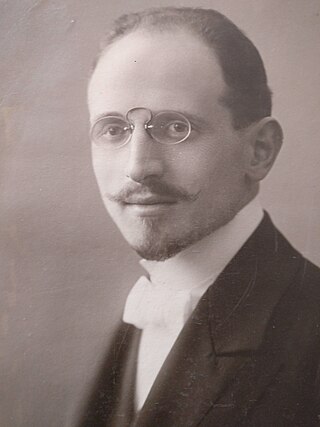
Arthur Löwenstamm was a Jewish theologian, writer and rabbi in Berlin and in London, where he came in 1939 as a refugee from Nazi Germany.

Hermann Simon is a German historian who was for 27 years director of the Foundation "New Synagogue Berlin - Centrum Judaicum".

The Rottweil Synagogue was a former Jewish congregation and synagogue, located in Rottweil, in the state of Baden-Württemberg, Germany. Completed in 1861, the synagogue was destroyed by Nazis during Kristallnacht, on November 9, 1938. The desecrated synagogue is located in Kameralamtsgasse 6, former Judengasse, close to Kapellenkirche and next to Bischöfliches Konvikt and gymnasium. The building was used as the Hartmut Benk driving school up until 2019.

The Synagogues of the Swabian type are former Jewish synagogues built between 1780 and 1820 in Swabia, in testate of Bavaria, in Germany. They were synagogues of a specific style, reflecting the growing self-confidence and the increased acceptance of the Jews of Swabia in the 18th century.

The Kłodzko Synagogue, officially the Synagogue of Kłodzko, and formerly the Synagogue in Glatz, was a former Reform Jewish congregation and synagogue, located on the Grünestraße, in Glatz, Germany. This location is now Wojska Polskiego Street, in Kłodzko, in Kłodzko County in Lower Silesia, Poland.
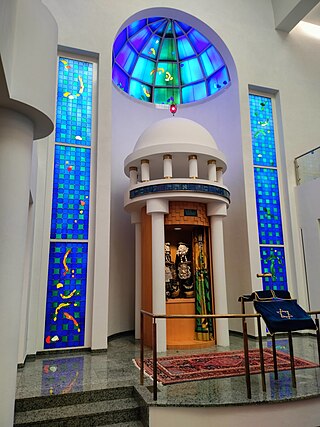
The New Synagogue is a Reform Jewish congregation, synagogue, community centre, and Jewish museum, located in Darmstadt, in the state of Hessen, Germany.

The Pestalozzistrasse Synagogue is a liberal Jewish congregation and synagogue, located at 14–15 Pestalozzistraße, in the Bezirk of Charlottenburg-Wilmersdorf, in Berlin, Germany.

The Wittlich Synagogue is a former Jewish congregation and synagogue, located on Himmeroder Straße 44, in Wittlich, in the state of Rhineland-Palatinate, Germany. Designed by Johannes Vieknen in the Art Nouveau style and completed in 1910, the synagogue was the main place of worship for the city's Ashkenazi Jewish community until 1938.

The Fraenkelufer Synagogue is a Conservative congregation and synagogue located on Kottbusser Ufer 48–50, today's Fraenkelufer 10-16, in the Kreuzberg district of Berlin, Germany.

The Görlitz Synagogue is a Jewish congregation and synagogue, located on Otto-Müller-Straße, in Görlitz, Germany. Built between 1909 and 1911 in the Art Nouveau style, the synagogue was the main place of worship for the city's Ashkenazi Jewish community. Despite an arson attack, the synagogue was one of the few synagogues in the area to survive Kristallnacht, sustaining only minor damage. The damage was lessened as firefighters ignored the Nazi German orders to let the synagogue burn. With the city's Jewish population depleted, the unused synagogue became a ruin in the following decades.
The history of the Jews in Hannover began in the 13th century. In 2009, about 6200 people belonged to the four Jewish communities in Hannover.

The Bornplatz Synagogue was a synagogue located in the Grindel district of Hamburg. It was inaugurated in 1906 and was one of the largest synagogues in Germany. It served as the main synagogue of the German-Israelite Community.

